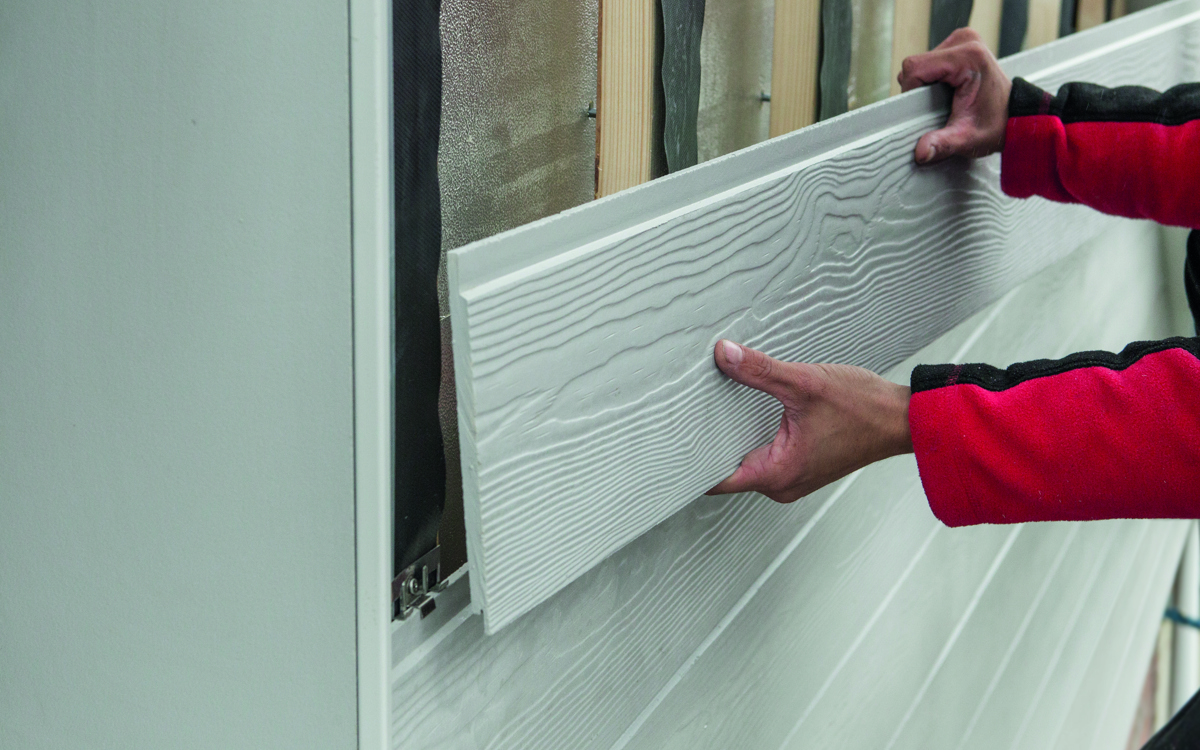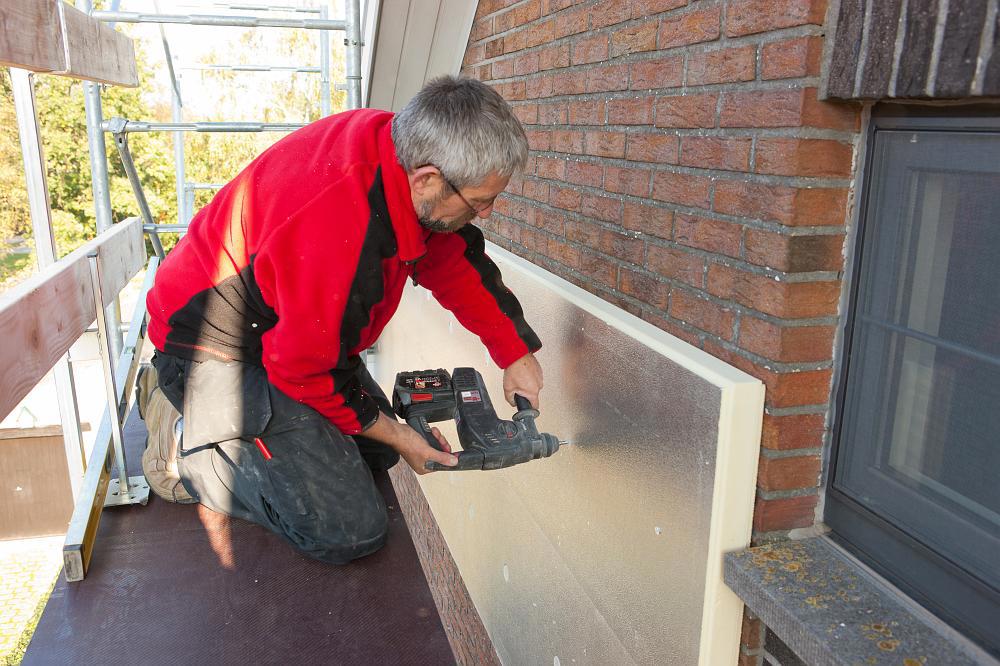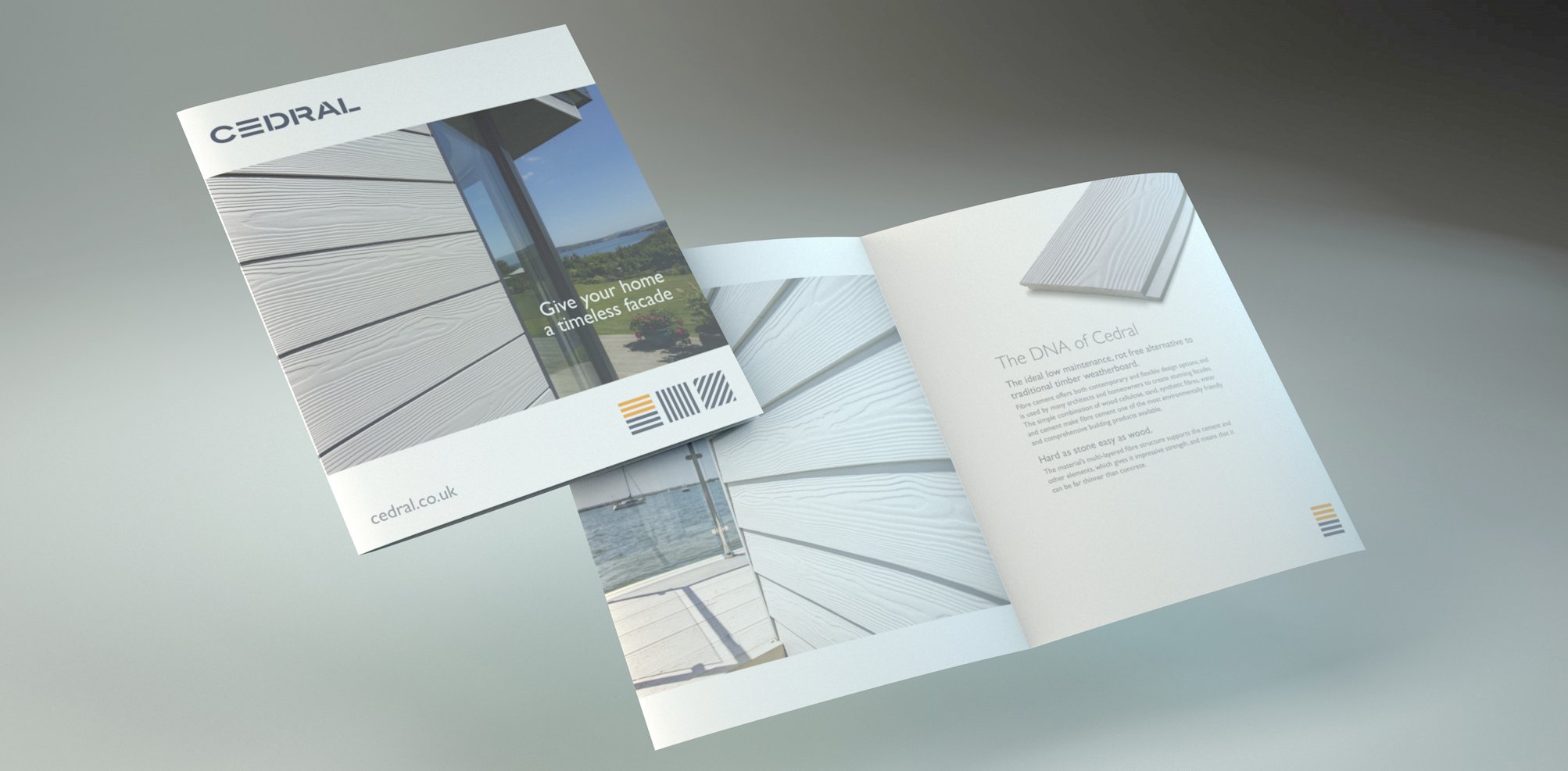What to keep in mind when installing facade cladding? We give you an overview of different cladding options (brick and fibre-cement) and the insulation material that can go with it. An energy-efficient facade does not only contribute to a comfortable living environment, it is also good for your wallet and the climate.

What is facade cladding?
Let’s start with the beginning. Cladding is the installation of a protective facade material over another (like a second skin). The outer layer adds protection to your home. It improves your house’s weather resistance against rain, snow and wind… But as facade cladding is an extra shell around your home, it is also very visible. In that sense, it also serves an aesthetic function. You want your house to look good, of course. And cladding also helps you do that.
Cladding is usually combined with insulation to improve your house’s degree of thermal insulation against the heat and cold. Insulating blocks made from polystyrene or mineral wool, for instance, are placed on your walls or on areas that are most exposed to the cold and wind. To protect the insulation and your home, the insulated facade is covered by facade cladding. Fibre-cement sidings are a good and good-looking way to do this.
A cladding guide for your home
When you are adding insulation and cladding to your house, there are a few elements to take into account. Here are a few tips to make sure your home gets the best possible second skin.
- Planning permission: always check the local building regulations. When changing the exterior of an existing house, you might need to apply for planning permission. This is definitely so for listed buildings and protected areas. Check with your local building authorities.
- Aesthetics: looks do matter. Choose a cladding material that suits the style of your house, but also the surroundings. Fibre-cement sidings and slates come in a variety of colours to allow you to be creative, but also to fit in perfectly.
- Maintenance: different facade cladding requires different maintenance. Brick walls require occasional cleaning and you need to keep an eye on possible water damage. Fibre-cement weatherboards on the contrary are low-maintenance. When dust or dirt collects, you just need to wipe them with a soft brush or a cloth with some soapy water, to keep them as new.
- Cost: different types of facade cladding and their installation come at a different cost. Whereas an outer brick wall tends to be expensive, fibre-cement weatherboards are a cheaper alternative, depending on your location, the chosen brand etc.
- Fixing methods: fibre-cement weatherboards are attached thanks to handy perforated closures to the top and bottom of battens. This makes them easy to install. Check the Cedral fixing guide for more detailed information. Brick walls are built connected to the interior wall or structure of your house. It is a less flexible method, as a brick wall is difficult to change.
- Professional installation: how you install the cladding around your house, will have a big influence on the price. Fibre-cement sidings are easy to install yourself, thanks to the handy profiles and trims. But of course, you can also find a professional installer in the Cedral installer locator.

Which cladding materials are best for your facade?
Different materials have different advantages and disadvantages. Let’s compare two of the most common cladding materials.
- Bricks: the advantages of a brick protective wall around your house structure are manifold. They are strong and durable as they are fire-resistant and weather proof. Bricks are also thermally efficient and quick to lay. You can use them for both modern and traditional designs, because they exist in various colours, sizes, finishes and textures. The main disadvantage is that it is an expensive and inflexible cladding option.
- Fibre-cement weatherboards: they are a strong competitor for brick walls. They are long-lasting and low-maintenance. Fibre-cement sidings or slates are a sustainable option for your facade as they are composed of naturally available components that are recyclable. The Cedral weatherboards are available in many factory-applied weather-resistant colours and finishes, so you can use them for both modern and contemporary designs. With the tongue and groove system of Cedral Click, installing them yourself is child’s play. And fibre-cement cladding is compatible with a wide variety of insulation.
Ask your free sample of fibre-cement weatherboards today.

Combine with insulation to make your house energy efficient
Both bricks and fibre-cement facade cladding can be used in combination with insulation. Different insulation materials have different properties. We give you some tips to choose the perfect insulation for your home.
- Heat conduction and convection: heat flows through materials from hot to cold parts until the temperature is evened out (conduction) and hot air rises while hot air descends. All insulation materials have slow conductive and convective heat flows. Depending on the type of insulation material and its thickness, you have a higher ‘resistance to heat flow’ (expressed in an R value). This will keep your home warm when it is cold outside, and your living environment will remain fresh when it is hot outside.
- Types of insulation: insulation comes in many forms and shapes. Foam board, usually made with polystyrene, is suitable for walls, floors, foundations, ceilings etc. They have a high insulating value, high thermal resistance and they reduce heat conduction a lot. Insulation blankets – usually supplied in rolls – can be made from mineral wool, fibreglass etc. These are suitable for walls, floors, ceilings etc. One of the advantages is that you can easily install it yourself, making it an inexpensive option. Fibre insulation is composed of mineral wool or fibreglass and is suitable for air ducts and places that require insulation to withstand high temperatures. Some of the insulation materials are environmentally friendly, while other types are not. And the different materials of course also have a different price tag. Choose the insulation that fits your needs.
Read more about the advantages of external facade insulation in our blog.
